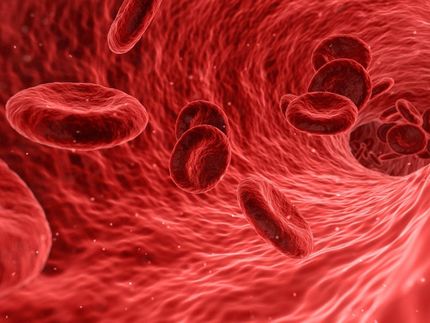First use of antibody and stem cell transplantation to successfully treat advanced leukemia
For the first time, researchers at Fred Hutchinson Cancer Research Center have reported the use of a radiolabeled antibody to deliver targeted doses of radiation, followed by a stem cell transplant, to successfully treat a group of leukemia and pre-leukemia patients for whom there previously had been no other curative treatment options.
All fifty-eight patients, with a median age of 63 and all with advanced acute myeloid leukemia or high-risk myelodysplastic syndrome – a pre-leukemic condition – saw their blood cancers go into remission using a novel combination of low-intensity chemotherapy, targeted radiation delivery by an antibody and a stem-cell transplant. Forty percent of the patients were alive a year after treatment and approximately 35 percent had survived three years, about the same rates as patients who received similar treatment but whose disease was already in remission and who had much more favorable risk for relapse when therapy began.
Results of the research appear in the journal Blood. The principal investigator and corresponding author of the paper is John Pagel, M.D., Ph.D, a transplant oncologist and assistant member of the Hutchinson Center's Clinical Research Division.
The purpose of the study was to find the maximum dose of radiation that patients could tolerate with acceptable toxic side effects, not to assess how effective the novel treatment was, according to Pagel and colleagues. However, "the results appear to be very encouraging and warrant us to study it further for patients who really have no significant other curative options," Pagel said.
To find the optimal dose of radiation, researchers began at 12 Gy and escalated the dosages in increments of 2 Gy up to a Gy of 26. At that dose, some toxicity to the heart and lungs was found so they concluded 24 Gy to be the maximum effective dosage. The 21 patients who received the maximum radiation dose have survived the longest, researchers reported.
The key to success in this study was use of a radiolabeled antibody that has therapeutic iodine 131 attached and is designed to target leukemic bloods cells that carry a marker on the surface of the cell known as CD45. Its use in delivering targeted amounts of radiation was developed several years ago at the Hutchinson Center. Delivered intravenously, the radiation looks for the CD45 antigen receptor on the surface of blood cells. This approach results in a two- to four-fold increase in the amount of radiation that reaches cancerous cells as compared to standard external beam radiation, which also radiates normal surrounding organs and tissue. The more radiation that can be applied, the more cancer cells will be killed in preparation for donor stem cells to take over the diseased immune system and kill off the remaining cancer cells.
Pagel said further research is needed to test more patients at the highest radiation dose both at the Hutchinson Center and at other transplant centers around the country.
Most read news
Topics
Organizations
Other news from the department science

Get the life science industry in your inbox
By submitting this form you agree that LUMITOS AG will send you the newsletter(s) selected above by email. Your data will not be passed on to third parties. Your data will be stored and processed in accordance with our data protection regulations. LUMITOS may contact you by email for the purpose of advertising or market and opinion surveys. You can revoke your consent at any time without giving reasons to LUMITOS AG, Ernst-Augustin-Str. 2, 12489 Berlin, Germany or by e-mail at revoke@lumitos.com with effect for the future. In addition, each email contains a link to unsubscribe from the corresponding newsletter.

















































